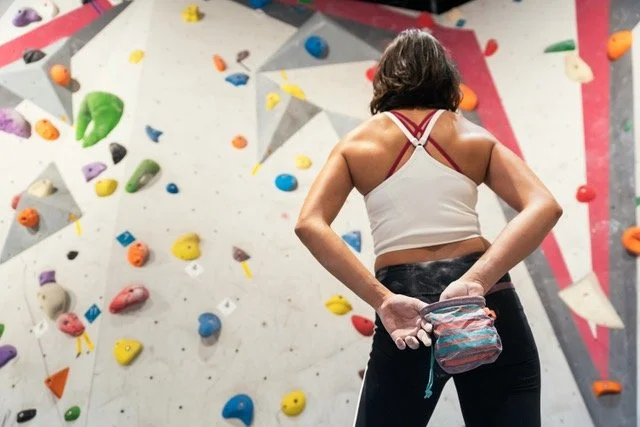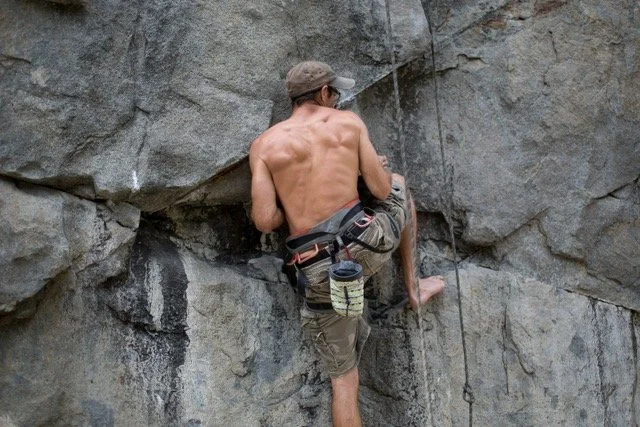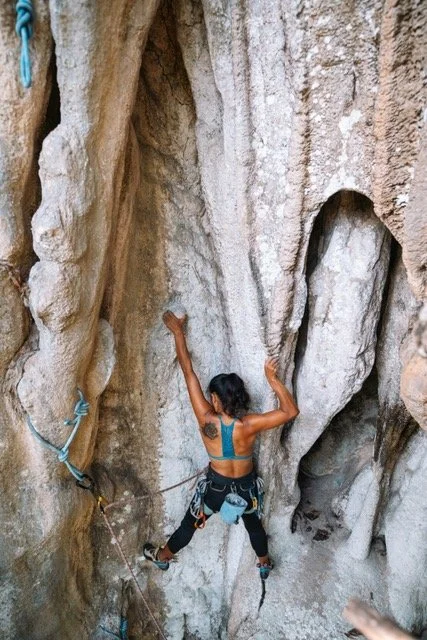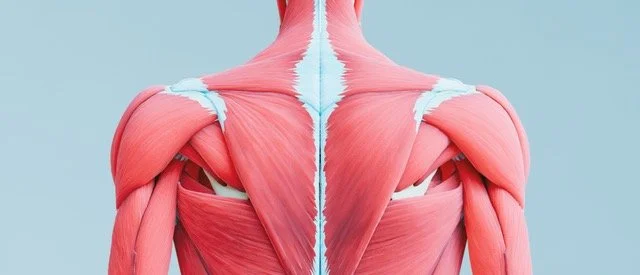By Charlie Brahmbhatt, Physiotherapist (MSc Sports Medicine & Exercise)
Why Shoulder Injuries Are Common in Climbers
Climbing demands strength, control, and endurance — particularly from your shoulders. With repetitive, high-intensity movements, it’s no surprise that shoulder injuries are among the most common problems in climbers.
As a physiotherapist and a (very) novice climber myself, I know firsthand how frustrating shoulder pain can be when it limits your progress.
In this article, you’ll learn:
The main causes of rotator cuff–related shoulder pain in climbing
The key symptoms to look out for
What to do if your shoulder starts hurting
How to prevent climbing-related shoulder injuries
While finger and hand injuries top the list (read our full post on finger injuries in climbers), shoulder injuries come a close second. A study of 1,251 climbing-related injuries found that 17.7% (158 cases) were shoulder injuries (Wright et al., 2001). Another survey showed that 77% of experienced climbers have experienced shoulder pain at some point in their careers.
Bottom line: Strong, healthy shoulders are essential for climbing longevity and performance.
Common Symptoms of Rotator Cuff–Related Shoulder Pain
Most climbing-related shoulder injuries are overuse injuries — they develop gradually rather than from a single traumatic event.
The rotator cuff (a group of muscles and tendons stabilising the shoulder) is often the source of pain.
Typical symptoms include:
Dull ache in the upper arm or front of the shoulder (“badge area”)
Weakness or reduced climbing performance (even without pain)
Night pain, especially after hard sessions (e.g. lots of gastons or underclings)
Pain when reaching overhead or behind the back (e.g. putting on a jacket)
Stiffness or reduced range of motion
In some cases, you’ll notice loss of performance before pain starts — an early warning sign that your shoulder is struggling to cope with training load.
Why Shoulder Injuries Happen in Climbers
There are several key reasons climbers develop shoulder issues:
1. Overtraining Without Recovery
Climbing too often, increasing intensity too fast, or skipping rest days overloads the rotator cuff.
Try to:
Schedule active rest days
Reduce session volume when increasing difficulty
Build intensity gradually
2. Inadequate Warm-Up
A poor warm-up increases soft tissue injury risk. A proper warm-up should include:
Dynamic shoulder and upper back movements
Activation drills for the rotator cuff and scapular stabilisers
A few easy climbs before tackling harder routes
3. Insufficient shoulder strength
Beginners or returning climbers often lack the strength to tolerate climbing loads.
Incorporate climbing-specific strength training (like external rotations, scapular retractions, and overhead stability work).
4. Poor Climbing Technique
Novice climbers often overuse their arms instead of driving through the legs and core.
Consider climbing coaching or video analysis to identify inefficient movement patterns and reduce shoulder strain.
What to Do If You Develop Shoulder Pain
Act early — shoulder injuries tend to linger if ignored.
1. Modify Your Climbing (Don’t Just Stop)
Instead of quitting, reduce load and volume:
Avoid steep overhangs and dynamic moves
Add extra rest days
Stick to pain-free climbs
We call this “gentle, pain-free loading” — it maintains conditioning while allowing healing.
In the early phase of injury, climbing should be completely pain-free.
2. Try Isometric Exercises
Isometrics (muscle contractions without movement) can reduce pain and help maintain strength.
Example:
3 sets × 45-second holds of shoulder external rotation against resistance (band or wall).
3. Use Pain Relief Wisely
Short-term use of over-the-counter medication may help if pain affects sleep or daily life — always check with your GP first.
When to See a Physiotherapist
If pain lasts more than 1–2 weeks, or you notice:
Ongoing weakness
Restricted movement
Pain interfering with sleep or daily tasks
…it’s time to get assessed by a physiotherapist.
At our clinic, we offer:
Comprehensive assessment and diagnosis
Climbing-specific rehab programmes
Return-to-climb protocols
Collaboration with climbing coaches and gyms to modify your training safely
Read more about common climbing injuries.
Final Thoughts
Shoulder pain doesn’t have to stop you climbing.
With smart training, proper technique, and early rehab, most shoulder injuries are preventable — and treatable.
If your shoulder pain is stopping you from climbing comfortably, book an assessment today and let’s get you back on the wall pain-free.






